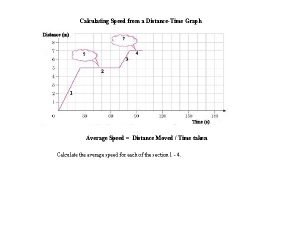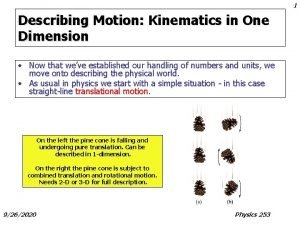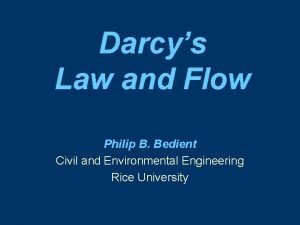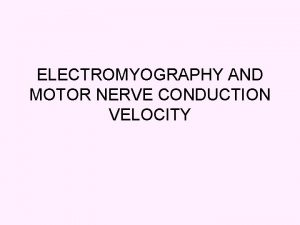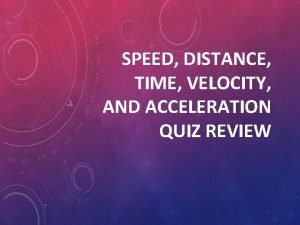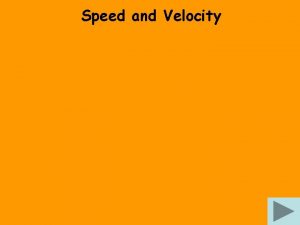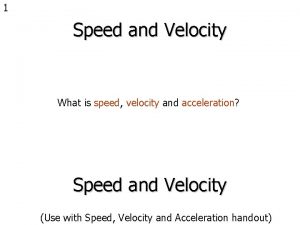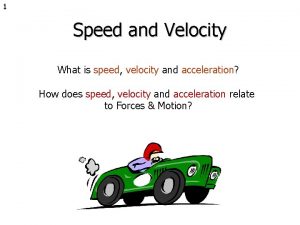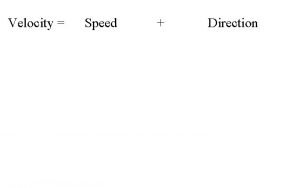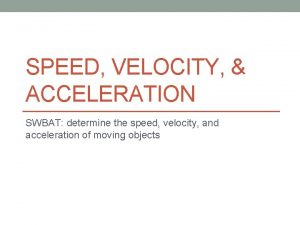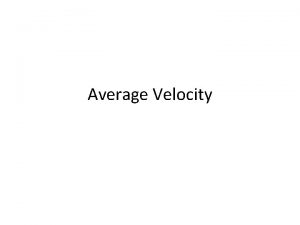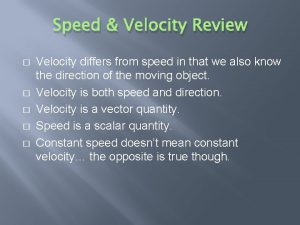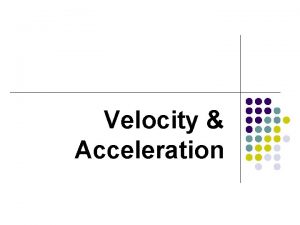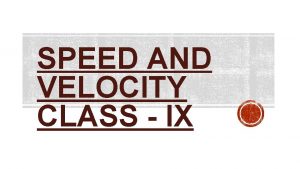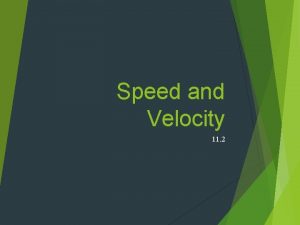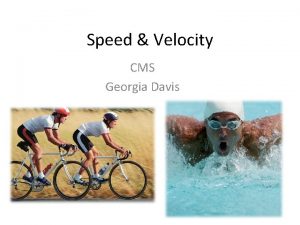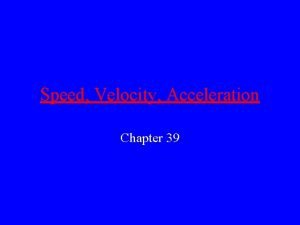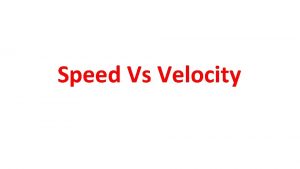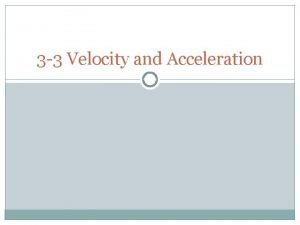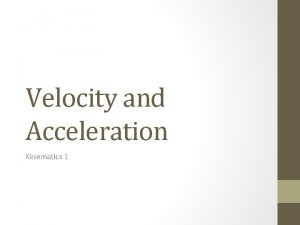Speed and Velocity Aim to calculate speed and



















- Slides: 19

Speed and Velocity Aim: to calculate speed and velocity correctly. Aim: to determine the difference between the two in word problems

Are you in Motion? Yes, you are you in Motion! ■ Heart is pumping involuntarily. ■ Blood is moving through your veins. Cells are moving! The earth is rotating on its axis and we are on the earth! ■

What is motion? The change in position of an object over time compared to a reference point.

All motion is relative to a Reference Point. Observing an object in motion in relation to an object that appears to stay in place. Common Reference Points: Buildings, earth, trees

Speed How fast an object moves or the rate of motion Speed = distance v= d time t Units: km/h or m/s

What is the speed of a car traveling Northeast a distance of 300 km in 3 hours? G: time = 3 hours U: Speed distance = 300 km NE v = 100 km/h v = 300 km v = d F: S: 3 h t What would the velocity be? v = 100 km/h NE

Analyze this graph! Constant Speed! Speed does not change while the person is driving. Ex. Cruise Control

Average Speed Total distance divided by total time. Usually shown in graphs. Average Speed = total distance total time Units: km/h or m/s

Analyze this graph! • Speed is not constant. • Driver speeds up or slows down. • Ex. traffic, weather, speed limit change. Average speed

■ ■ Average Speed = total distance total time Aver. v = 20 km 4 h Aver. v = 5 km . 5 h

Velocity Describes how fast an object moves (its speed) and direction. Speed Vs Velocity (v) = distance + direction East, or West) time (North, South, Units: km/h or m/s Includes direction N, S, E, or W

Resultant Velocity When two objects are moving at the same time: In the same direction - add the velocities together In opposite directions - subtract smaller velocity from larger velocity. Larger velocity takes the direction.

Resultant Velocity Ex. A bus travels 20 m/s East and a person is walking in the opposite direction that the bus is moving at 5 m/s West, what is its resultant velocity? ■Opposite direction subtract! The largest number is the direction it will go in. - 5 = 15 ⇒- ⇐ = ⇒ 20 The resultant velocity = 15 m/s East

Resultant Velocity You are on a bus traveling 10 m/s east and you decide to move from the front of the bus to the back of the bus walking west at a rate of 2 m/s. What is your resultant velocity? Resultant Velocity: 10 m/s - 2 m/s = 8 m/s

Gives other Formulas d v v=d t x t d=vxt t=d v

If you travel in a car East at a speed of 50 km/h in 30 minutes, how far will you have traveled? Hint: How do you convert to hours? v = 50 km/h E G: t =. 5 hours F: d = v x t U: d = 50 km x. 5 h h S: distance d = 25 km

If you travel by bike at a speed of 10 km/h in 40 km, how long will it take you to reach your destination? v = 10 km/h G: d = 40 km F: t=d v U: S: t = 40 km 10 km/h time t = 4 hours

If you travel in a car East at a speed of 25 km/h in 4 hours, how far will you have traveled? v = 25 km/h East G: U: t = 4 hours F: d=vxt d = 25 km x 4 h h S: distance d = 100 km

500/2 = 250 km/h 300/2 = 150 km/h 200/2 = 100 km/h 100/2 = 50 km/h
 How to calculate average speed from a velocity time graph
How to calculate average speed from a velocity time graph Angular acceleration vs linear acceleration
Angular acceleration vs linear acceleration Initial velocity and final velocity formula
Initial velocity and final velocity formula Deceleration formula
Deceleration formula Darcy's law definition
Darcy's law definition Final velocity initial velocity acceleration time
Final velocity initial velocity acceleration time Instantaneous velocity vs average velocity
Instantaneous velocity vs average velocity Derivation of darcy's law
Derivation of darcy's law Tangential speed
Tangential speed Minimum velocity
Minimum velocity Range formula physics projectiles
Range formula physics projectiles Final velocity formula
Final velocity formula Positive sharp waves emg
Positive sharp waves emg Solve for average speed
Solve for average speed How to calculate approach velocity
How to calculate approach velocity Velocity ratio example
Velocity ratio example Acceleration quiz
Acceleration quiz Speed velocity and acceleration problems
Speed velocity and acceleration problems Difference between speed and velocity class 9
Difference between speed and velocity class 9 Speed and velocity venn diagram
Speed and velocity venn diagram
